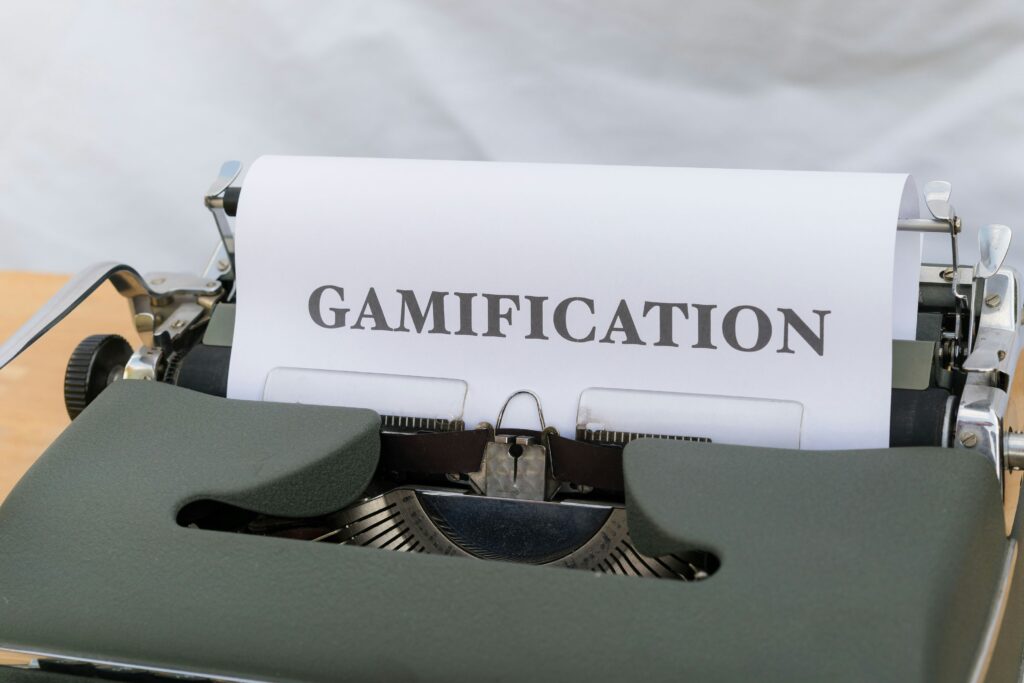Why Gamification Works: The Psychology Behind Engagement
Modern digital experiences are designed with more than just functionality in mind—they’re engineered to hold attention, drive habits, and keep users coming back. One of the driving forces behind this stickiness? Gamification.
The Psychology of Engagement
Gamification taps into core psychological triggers that keep users interacting longer and more often:
- Instant Feedback: Whether it’s a visual cue, confirmation message, or score, immediate responses encourage repeated actions.
- Reward Loops: Points, badges, levels, and unlocks satisfy the brain’s craving for achievement.
- Progress Tracking: Visible progress (like percentage bars or streaks) motivates users to return and complete tasks.
These elements activate the dopamine-driven reward system, making tasks that might otherwise feel mundane more compelling.
Beyond Games: Gamification in Everyday Digital Products
Gamification has expanded far beyond its roots in the gaming world. Today, you’ll find its influence in:
- Mobile Apps: Fitness trackers, language learning, meditation, productivity—many include streaks, level-ups, and goal badges.
- Web Platforms: Learning management systems, forums, and e-commerce sites use ranking systems, achievement milestones, and loyalty points.
- Digital Products: Onboarding flows, interactive tutorials, and subscription experiences are infused with game-like elements to boost user satisfaction and reduce churn.
Retention by Experience, Not Effort
At its core, gamification isn’t about turning work into play—it’s about creating meaningful user experiences that feel rewarding. The best implementations minimize cognitive load and maximize emotional impact. Instead of relying on users to push through frustration, gamified design encourages flow, satisfaction, and a sense of progress.
- Make progress visible to drive motivation
- Design challenges that scale with the user’s development
- Use rewards to celebrate milestones, not just completion
In 2024 and beyond, gamification remains a key ingredient in digital strategy, especially as user attention becomes more fragmented. Thoughtfully applied, it turns users from passive participants into eager, engaged communities.
Badges and Achievements
People love ticking boxes. Badges and achievements play into that instinct, using recognition to build habit and loyalty. These little rewards signal progress, even if it’s symbolic—a badge for logging in ten days in a row, or completing a beginner course. They deliver a dopamine hit without needing to hand out prizes.
Platforms like Duolingo, Fitbit, and even Shopify harness this well. You see progress, you feel challenged, and you keep coming back. But it only works if the rewards mean something. Milestones need to feel earned, not handed out like stickers for showing up. When badges reflect real effort—hitting a personal best, closing a learning loop—they stay motivating.
The trap is surface-level design. If everything gets a badge, nothing feels special. Thoughtful systems make users stretch a little, reflect a bit, and keep grinding. It’s not about flashy icons—it’s about proving you’re one step further than you were yesterday.
Personalization Meets Gamification
Personalization isn’t just about calling users by name anymore—it’s about knowing what motivates them and when. Vloggers and creators are using behavioral data to shape experiences that feel customized but not creepy. Think fitness vlog challenges that adjust based on your past engagement. Or content hubs that shift suggestions based on what time of day you’re active. When done right, it feels less like marketing, more like being understood.
Gamification takes that even further. Challenges, level-ups, and subtle rewards keep audiences coming back—not because they have to, but because it fires something in their brains. Creators are building in points systems, unlockable content, and tiered communities that reward loyalty and consistency without it feeling like a loyalty program.
What works best? Lightweight, optional systems where the viewer feels in control. There’s a line between fun and manipulative—and the smart creators know exactly where it is.
(For more depth: How Personalization Increases Customer Retention)
Gamification, when done right, boosts engagement. But in 2024, some creators are pushing it too far. Over-gamification happens when the mechanics—points, badges, streaks—start to matter more than the actual content or utility. It turns the experience into a loop of dopamine hits with no depth. Viewers notice. And they burn out fast.
Reward fatigue is also setting in. Audiences get numb to the same tricks. Just offering another leaderboard slot or flashy pop-up isn’t enough. Creators are having to up the ante—new formats, evolving storytelling mechanics, deeper community rewards—just to keep people interested.
The core problem? Gamification works best when it amplifies intrinsic motivation, not when it tries to replace it. If the content or mission doesn’t stand on its own, no level-up meter will save it. Smart vloggers in 2024 are integrating game-inspired elements to enhance value—not distract from it.
Gamification Is a Long-Term Engagement Strategy, Not a Quick Fix
Using gamification in your vlog isn’t about tossing points or badges onto content and hoping for overnight growth. It’s a longer game—one built around sustainable engagement and community loyalty. The goal isn’t novelty. It’s repeat behavior.
Smart creators are designing game mechanics that actually enhance the core content, not distract from it. Progress bars tied to viewer challenges, streak rewards for comments, or interactive polls that carry over through multiple uploads—these aren’t gimmicks when they’re grounded in your vlog’s actual themes.
The biggest mistake? Slapping on mechanics without understanding what your audience values. That’s why testing and iteration matter. Talk to your viewers. See what lands, what flops, and why. Gamification works best when it’s tailored, meaningful, and constantly evolving alongside the people using it.


 Norvain Eldwain, the founder of FLP Stampive, is a visionary marketing strategist recognized for her innovative approach to digital branding and consumer engagement. With a deep understanding of modern market dynamics, she has dedicated her career to helping businesses craft impactful brand identities and connect authentically with their audiences. Her leadership at FLP Stampive reflects a passion for creativity, analytics, and meaningful storytelling—bridging the gap between data-driven strategy and human connection. Through her work, Vionaryn continues to inspire marketers to embrace adaptability, authenticity, and forward-thinking solutions in an ever-evolving digital landscape.
Norvain Eldwain, the founder of FLP Stampive, is a visionary marketing strategist recognized for her innovative approach to digital branding and consumer engagement. With a deep understanding of modern market dynamics, she has dedicated her career to helping businesses craft impactful brand identities and connect authentically with their audiences. Her leadership at FLP Stampive reflects a passion for creativity, analytics, and meaningful storytelling—bridging the gap between data-driven strategy and human connection. Through her work, Vionaryn continues to inspire marketers to embrace adaptability, authenticity, and forward-thinking solutions in an ever-evolving digital landscape.